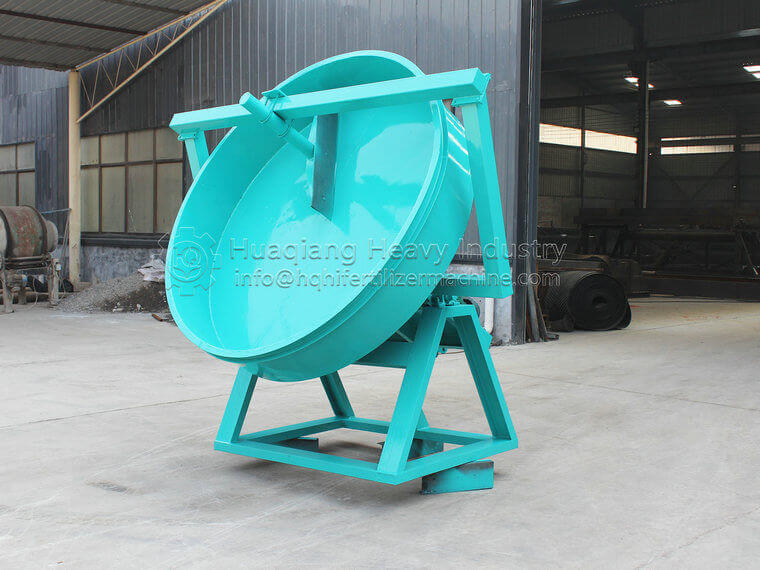The disc granulator is widely used in the field of fertilizer processing, and its unique processing flow is the key to producing high-quality fertilizers. Let's analyze this process in detail below.
The first step is raw material preparation. There are various types of fertilizer raw materials, including organic materials such as animal manure and plant residues, as well as inorganic materials such as urea and ammonium phosphate. These raw materials need to be pre treated first, reducing their particle size through crushing equipment for better mixing and granulation in the future. At the same time, accurately weigh various raw materials according to the fertilizer formula to ensure accurate nutrient ratios. In addition, it is crucial to adjust the humidity of the raw materials, as appropriate humidity can promote particle formation, generally controlled at around 20% -30%.
Step two, the raw materials enter the disc granulator. The disc begins to rotate under the drive of the power system, and the speed is set according to the characteristics of the raw material and the expected particle size. The raw materials are evenly distributed onto the rotating disk and rapidly spread towards the edge of the disk under the action of centrifugal force. At the same time, the friction between the disc and the raw material causes the raw material to move upward along the inner wall of the disc. After reaching a certain height, it falls back to the bottom due to gravity, forming a cyclic motion.

Step three, spray adhesive. During the movement of raw materials, the nozzle installed above the disc begins to work, spraying adhesive onto the raw materials. The function of adhesive is to bond small raw material particles together. Common binders include natural polymer materials and some inorganic substances, which exert viscosity under the action of water, promoting particle aggregation. The spraying amount needs to be precisely controlled. Excessive spraying can lead to particles that are too large and heavily adhered, while insufficient spraying can make it difficult for the particles to form.
Step four, particle growth. As the disk continues to rotate, the small particles that have already bonded together continue to adsorb the surrounding raw materials and gradually grow during the rolling process. During this process, collisions and friction between particles also make them more compact. The operator adjusts the rotation speed and inclination angle of the disc in a timely manner by observing the growth of particles. The rotational speed affects the residence time of particles on the disc, which in turn affects the particle size; The inclination angle changes the motion trajectory and residence time of the raw material on the disc, and also plays an important role in particle shaping.
Step five, discharge the material. When the fertilizer particles reach the expected size and quality standards, they will overflow from the edge of the disc, completing the granulation process. These freshly made particles may still contain some moisture and require subsequent drying treatment to reduce moisture content, improve particle stability and storage performance.
Step six, screening and packaging. Dried fertilizer particles are separated by screening equipment from particles that do not meet the particle size requirements for further processing or recycling. Qualified particles are then transported to the packaging process for quantitative packaging, ultimately becoming marketable fertilizer products.
The disc granulator transforms various fertilizer raw materials into high-quality granular fertilizers through a series of rigorous processing procedures, providing strong support for agricultural production.